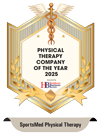What Are Shin Splints?
The term shin splints has been adopted to describe pain in the front lower leg, mostly of an acute nature that may persist from hours to days. People that seem to be afflicted with this condition are mostly individuals who engage in moderately to heavy physical activities on a daily basis.
Common Reasons for Shin Splints
The main reasons that shin splints occur can be attributed to two different groups – overload/incorrect training methods, and biomechanical inefficiencies. Overloading and training errors occur when the individual regularly plays sports that require a lot of running. It is the consequence of running from the repeated shock on the muscles and tendons that cause stress, fatigue and overload in the soft tissues. Ultimately, when the tissue loses its ability to absorb the shock, pain sets in.
Biomechanical inefficiencies refer to conditions that you are born with, such as flat feet. Flat feet lead to overpronation which causes the foot to roll inwards upon impact with the floor. This can cause the tibia to twist, in turn over-stretching the muscles in the lower leg and causing shin splints in the long run. Other biomechanical causes can include poor running techniques, running with excessive forward or backward lean, and tight muscles in the lower leg. High-intensity activities that involve landing on the balls of your feet repeatedly for a sustained period of time can also play a major factor in the aggravation of shin splints.
Diagnosis and Treatment
The diagnosis for shin splints can normally be done during a regular physical examination. Through your physical activity history, along with physical examinations and perhaps imaging scans, your doctor will be able to determine the root cause for your shin splints.
The treatment of shin splints is similar to other soft tissue injuries, so surgery is rarely necessary. When faced with the immediate onset of shin splints, apply the R.I.C.E technique to alleviate the pain. Stop and rest immediately, followed by icing the area of pain and apply compression. Finally, elevate your legs to limit blood flow from the area and abstain from further physical activities. These have to be performed within 72 hours from when the pain first starts to give you the best possible opportunity to recover from the injury.
[divider height=”1″ width=”250px” bg_color=”#34ceda” margin_top=”20″ margin_bottom=”20″ alignment=”center” display_icon=”off” /]
In need of Physical Rehabilitation? Schedule an Appointment Today!
If you have any questions, or want a consultation with a professional, feel free to call, or schedule an appointment online at any of our Bergen County or Passaic County offices in New Jersey. Choose from Glen Rock, Franklin Lakes, Fair Lawn, Ridgewood/Ho-Ho-Kus, and/or Clifton – we make it possible for you to visit any of our offices at your convenience.
Do you, or someone you know suffer from physical discomfort? We can help with a simple consultation.





